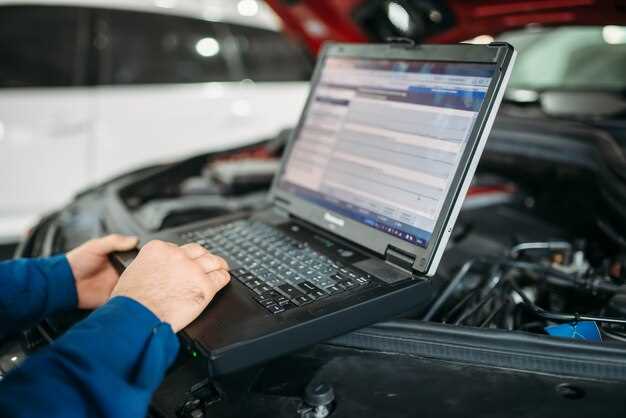

In the world of automotive technology, the OBD2 scanner has become an essential tool for diagnosing and troubleshooting issues in modern vehicles, including diesel engines. This device connects to the vehicle’s onboard computer system, allowing mechanics and car enthusiasts to retrieve vital codes that indicate specific malfunctions or inefficiencies in various components. Understanding these OBD2 codes is crucial for effective maintenance and repair, especially in diesel vehicles, which often require specialized attention due to their unique operating characteristics.
Diesel engines, known for their durability and fuel efficiency, can experience a range of issues that may not be immediately apparent. The OBD2 scanner enables users to access detailed diagnostic information that can pinpoint not only engine performance problems but also issues related to the exhaust system, fuel delivery, and emissions controls. By interpreting the codes generated by the scanner, technicians can make informed decisions regarding necessary repairs and preventative measures.
Utilizing an OBD2 scanner for diesel vehicle diagnostics is not only beneficial for professional mechanics, but it is also a valuable resource for everyday vehicle owners. With the right knowledge and tools, car owners can take proactive steps to ensure their diesel engines operate smoothly, ultimately prolonging the life of their vehicles and enhancing performance. Understanding how to use an OBD2 scanner effectively can empower diesel vehicle owners to manage their vehicle’s health more efficiently.
Interpreting Diesel-Specific Error Codes with OBD2 Scanners
Diesel engines often have distinct characteristics that require specialized diagnostics. OBD2 scanners are equipped to read error codes specific to diesel vehicles, allowing mechanics and technicians to identify issues effectively. Understanding these diesel-specific codes is crucial for accurate troubleshooting and maintenance.
Common diesel error codes often begin with the letter “P,” indicating powertrain issues. For instance, code P0201 signifies a problem with the fuel injector in cylinder one. This could lead to performance issues, such as rough idling or reduced power. Correct interpretation of these codes helps in pinpointing faulty components quickly.
Another important group of codes pertains to the exhaust system and emission controls. For example, DTC P0401 indicates insufficient flow in the EGR (Exhaust Gas Recirculation) system, which can affect engine performance and emissions. Recognizing and addressing such codes promptly ensures compliance with environmental regulations and maintains optimal engine function.
Diesel-specific error codes may also cover topics like fuel quality and pressure. Code P0193 refers to high fuel rail pressure, which can indicate issues with the fuel system, leading to potential engine damage if not addressed. Understanding this correlation between codes and potential engine health is vital for preventive maintenance.
Among the tools available for interpreting these codes, professional-grade OBD2 scanners often provide enhanced functionality, offering detailed descriptions and suggested troubleshooting steps. This capability facilitates a more efficient diagnostic process, especially when dealing with complex diesel engine systems.
In summary, accurately interpreting diesel-specific error codes using OBD2 scanners is essential for effective vehicle diagnostics. By understanding the meaning and implications of these codes, technicians can ensure that diesel engines operate smoothly and efficiently, ultimately extending the lifespan of the vehicle and enhancing performance.
Step-by-Step Guide to Connecting an OBD2 Scanner to Diesel Vehicles

Connecting an OBD2 scanner to a diesel vehicle is essential for accurate diagnostics and troubleshooting. Follow these steps for a seamless connection process.
Step 1: Gather Necessary Equipment
Ensure you have a compatible OBD2 scanner suitable for diesel engines. Check the scanner’s specifications to confirm it can read diesel-specific codes.
Step 2: Locate the OBD2 Port
The OBD2 port is usually found beneath the dashboard, near the steering column. Look for a 16-pin connector; if necessary, refer to the vehicle’s manual for precise location details.
Step 3: Turn on the Ignition
Before connecting the scanner, insert the key into the ignition and turn it to the “ON” position without starting the engine. This enables power to the OBD2 system and allows the scanner to communicate with the vehicle.
Step 4: Connect the OBD2 Scanner
Plug the OBD2 scanner connector into the vehicle’s OBD2 port firmly. Ensure a secure connection to avoid communication issues during diagnostics.
Step 5: Power Up the Scanner
Most scanners will power on automatically when connected. If not, press the power button to turn on the device. Watch for a prompt on the scanner indicating a successful connection.
Step 6: Select Diagnostic Mode
Once the scanner is powered, navigate through the menu to select the diagnostic mode. Diesel vehicles may have specific functions available, so make sure to choose the correct one for your vehicle type.
Step 7: Read Trouble Codes
After entering the diagnostic mode, the scanner will retrieve trouble codes stored in the vehicle’s ECU. Review the displayed codes carefully to identify potential issues affecting the diesel engine.
Step 8: Analyze and Record Findings
Take note of the trouble codes and any additional data provided by the scanner. Use this information for effective troubleshooting or to communicate with a technician if professional help is needed.
Step 9: Disconnect the Scanner
Once you have completed your diagnostics, power off the scanner and unplug it from the OBD2 port. Ensure everything is back in its original state for further use.
Step 10: Clear Codes if Necessary
If required, the OBD2 scanner may allow you to clear the trouble codes from the vehicle’s memory. Perform this step only after necessary repairs have been made to prevent potential oversight of underlying issues.
Common Issues Identified by OBD2 Scanners in Diesel Engines

OBD2 scanners are essential tools for diagnosing problems in diesel engines. They help identify issues by interpreting specific trouble codes associated with various engine components. Here are common problems detected by OBD2 scanners in diesel vehicles:
- Fuel System Problems:
P0090– Fuel Pressure Regulator Control Circuit.P0087– Fuel Rail/System Pressure Too Low.
- Emission System Failures:
P2452– Diesel Particulate Filter Pressure Sensor Range/Performance Problem.P2002– Diesel Particulate Filter Efficiency Below Threshold.
- Turbocharger and Supercharger Issues:
P0299– Turbocharger/Supercharger “A” Underboost Condition.P0234– Turbocharger Overboost Condition.
- Exhaust Gas Recirculation (EGR) Failure:
P0401– Exhaust Gas Recirculation Flow Insufficient Detected.P0403– EGR Control Circuit Malfunction.
- Glow Plug Issues:
P0670– Glow Plug Control Module Performance Problem.P0380– Glow Plug/Heater Circuit “A” Malfunction.
These trouble codes not only help in pinpointing the issues but also guide technicians in taking corrective measures to ensure optimal performance of diesel engines. Regular diagnostics using OBD2 scanners can help prevent severe damage and maintain efficiency.






